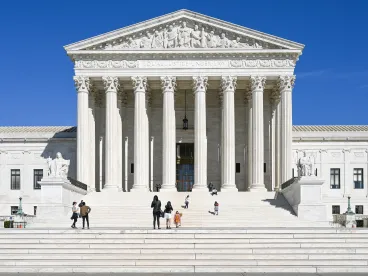On this episode of the Bracewell Environmental Law Monitor, host Daniel Pope talks with Bracewell partners Jeff Holmstead and Jeff Oldham about the Supreme Court’s recent decision in West Virginia versus EPA and its implications for both environmental law and more broadly for administrative law. This is the first of a two-part episode discussing this decision.
Jeff Holmstead is a partner in our Environment, Lands and Resources group who joins us from our Washington DC office. Jeff Oldham is a partner in our Litigation and Appellate practice group in Houston and Austin.
Could you explain the issues that were presented to the court in West Virginia versus EPA and just sort of set the table for us?
The issue really revolves around a rule that the Obama Administration issued back in 2015 called the Clean Power Plan. It was promulgated under Section 111 (d) of the Clean Air Act, which was a provision that had only been used three or four times before because it only applies to pollutants that are neither hazardous air pollutants nor criteria air pollutants. And since almost everything you can imagine is one or the other, Section 111 (d) is rarely used. It was used because CO2 is not either a HAP or a criteria pollutant. And historically it had been used again in just a handful of cases to get existing facilities to install pollution controls. EPA determined that when it came to reducing CO2, that really wasn't feasible. And instead, it read the statute creatively to require what they call generation shifting.
So, in essence, what that did was create a rather complicated system that over time would require coal fired power plants to generate less and to shut down. I don't recall the exact numbers of plants that they expected to be shuttered as a result of the case, but it was a fairly significant shift from coal to natural gas and then even more towards renewables.
How did the Supreme Court address the Major Question Doctrine in its majority opinion? Can you give us some information on where that is and what the state of the major question doctrine is today after this case?
The next time the court says something about the Major Questions Doctrine is when we will be able to talk about what the Major Questions Doctrine is because it is something that, to the dissent charge, had never been applied before, at least by name. By my count, it has been applied potentially three times in the last 12 months if you look at some of the cases and what they cited. So, this does appear in the dissent charges that this is the first case in which a majority of the court has actually applied by name the major questions doctrine. They cite to a number of the cases where it comes from. Those cases are ones that include, just in the last year, the CDC eviction moratorium case, the OSHA vaccine mandate case, and then a number of other cases going back several decades in terms of whether the FDA can regulate tobacco, or things like that.
Any thoughts on Justice Gorsuch’s concurrence and where the court may draw some guidance from his remarks in the future?
Well, he certainly did try to tie it to a much longer course of Supreme Court precedent than just in the last few decades. But I think what was notable about the concurrence to me was just that the breadth of what the concurrence tried to take on in terms of both grounding this principle and separation of powers. And then also, talking more about the history of the doctrine. But also, the concurrence tried its own hand at the list of factors, both the list of factors of when you might have a major question and then once you get to the major question, when is a congressional statement clear enough. And those lists somewhat relate to each other. They are not really independent lists in terms of when you have a major question and when Congress speaks clearly enough.
One of the questions I had after reading the opinions was whether the Major Questions Doctrine is something that the Supreme Court gets to use, or is it something that district and circuit court judges can use as well?
I don't see any reason why only the nine justices would have the authority to apply the Major Question Doctrine, so I think it'll be an argument routinely presented in the district courts and the circuit courts. And it will be interesting to see how it changes over administrations. Right now, certain states are frequently challenging the federal government and their agencies actions, and we have seen that over the course of the last several administrations. So, it will certainly be interesting to see how it gets used in cases and how many cases percolate their way to the Supreme Court.





 />i
/>i

